Beetroot is one of those wonderfully versatile vegetables perfect for creating quick, tasty, and satisfying dishes, from snacks and starters to robust mains.
Throw it in salads – Roasted Beetroot and Feta Salad, whip it into soups and dips like my delicious Roast Beet Hummus, or make tasty picnic sandwiches or beetroot bagels. It even roasts up into tasty crisps for a different take on potato chips—a perfect vegan picnic snack.
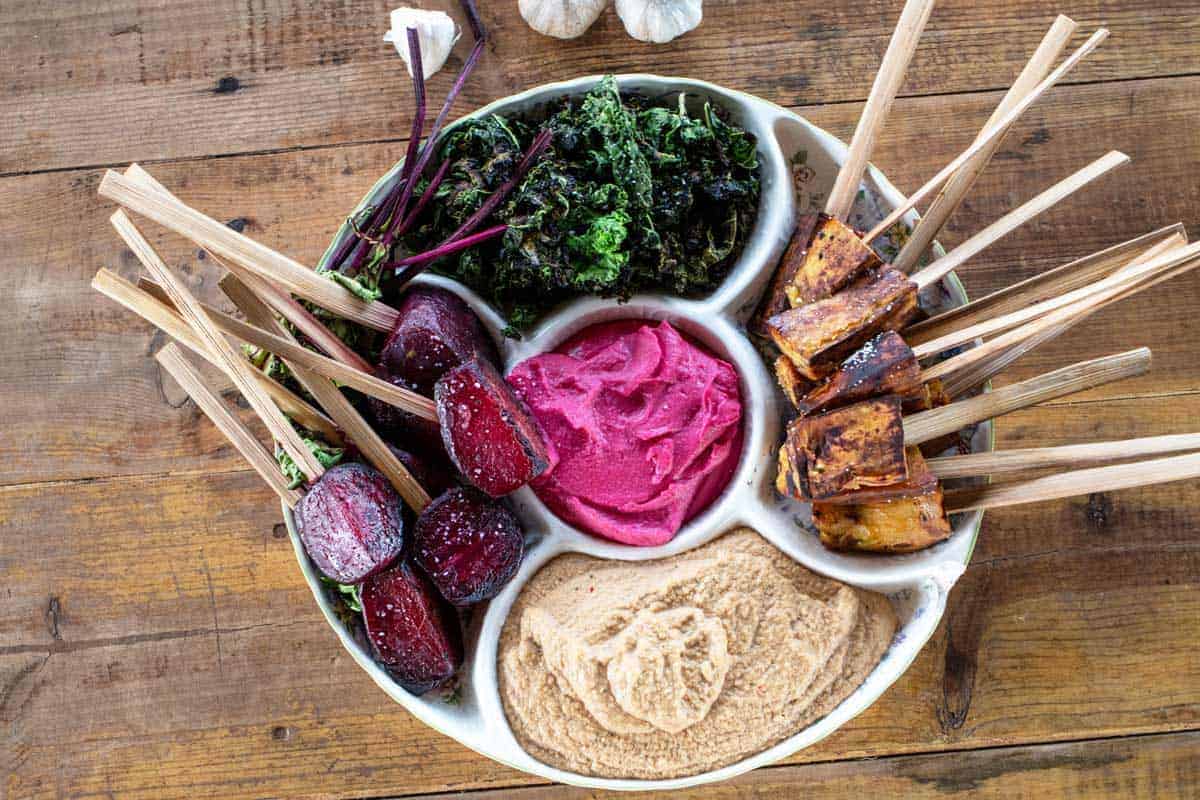
Can You Eat Raw Beetroot?
Yes, you can. Beetroots have a surprising array of health benefits, and as with most vegetables, raw beets contain more vitamins, minerals, and antioxidants. If you choose to eat your beets raw, expect a slightly different flavor and crispier texture, which is why raw beets lend themselves to being grated or thinly sliced. Cooked beetroot is better for chunky or puree recipes.

Tips for Roasting Beetroot
Roasting beetroot is so simple but if you haven’t had much experience with beetroot, there are a few tips to simplify the process.
First things first, you do not have to wrap the beets in foil to roast them. It is wasteful, and as foil leaches into your food, it’s not so good for you. I think people do this to prevent any mess from leakage and believe the skins require steam to come away easily. I have never found this to be the case.
To prevent a potential mess, simply place them on a baking sheet and use parchment paper.
I have always found the skins come off just as easily, and the beets rarely leak while being roasted.
Look for beets that are firm, round, and rich in color.
If the beets are bunched with the leaves still attached, fresh crisp leaves will tell you about their freshness. Make sure you save the greens.
Look for smaller beets, as larger beets tend to be woody and less sweet.
Yes, you can. My roasted beet and feta salad recipe actually includes them. Cut them away from the beets as soon as you get them home to prevent wilting of the leaves and drying out of the beets. Both the leaves and red stems are very nutritious and delicious. The stems and leaves are a great addition to salads and stir-fries. You can eat them raw or sautée in a pan as you would kale or Swiss chard.
There is no wrong or right on this as some prefer to peel them before cooking. If you give them a good scrub under running water before roasting, you don’t even need to worry about peeling at all. The skin will break down enough to eat in the roasting process.
That said, if you want to peel them, I find it is less messy to peel them after you roast them. Give the beets a wash without breaking the skin before roasting. Once they are roasted, run the beets under cold water or allow them to cool, and the skin will peel away by hand quite easily.
Kept in an airtight container, whole or sliced roasted beets will last in the fridge for 3-5 days.
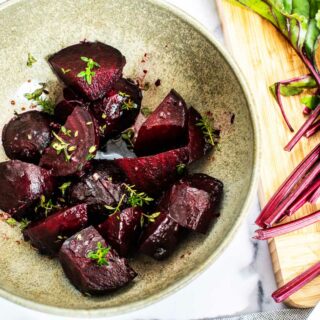
How to Roast Beets in the Oven
Ingredients
- 4 small to medium-sized beets - tops removed and washed.
- Drizzle of olive oil - you can also use coconut oil
- Sea salt
Instructions
- Preheat your oven to around 400 ℉ | 204 ℃
- Trim the leaves from the beets leaving a short amount of stem for you to grab the beets. Especially handy if you plan on peeling them after roasting. (it is fine to leave the skin on after roasting, it purely a personal preference)
- Give the beets a good wash using a vegetable brush under running water. Try not to break the skin unless you plan on leaving the skin intact after roasting.
- Toss the beets in olive oil and salt and place them whole onto a baking sheet. There is no need to wrap them in foil.
- Roast in the oven for 30-40 minutes, turning them halfway through.
- Cooking time will vary according to size. The beets are cooked when a knife or fork slides easily into the centre.
- Allow the beets to cool (or run under running water). If you choose to peel the skin off, simply rub it away with your fingers. Using food-grade kitchen gloves will prevent stained fingers.
- Trim any of the stem or remaining roots away from the ends, and your beets are ready to use.

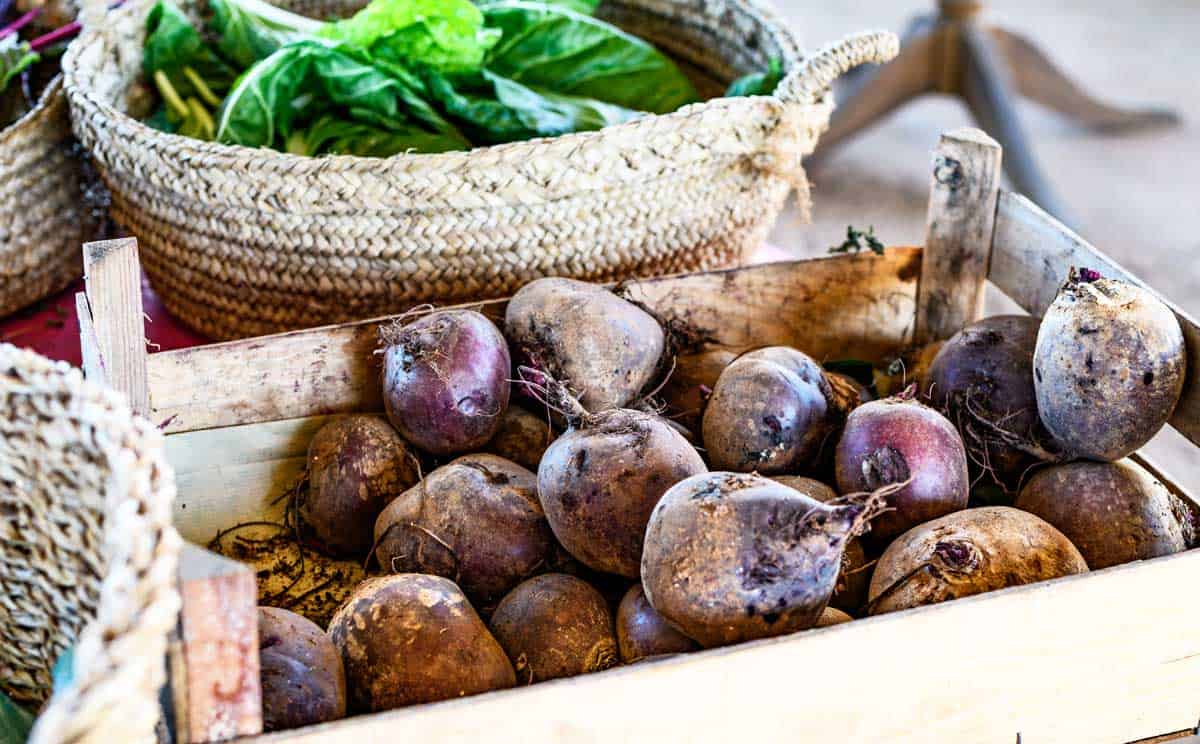
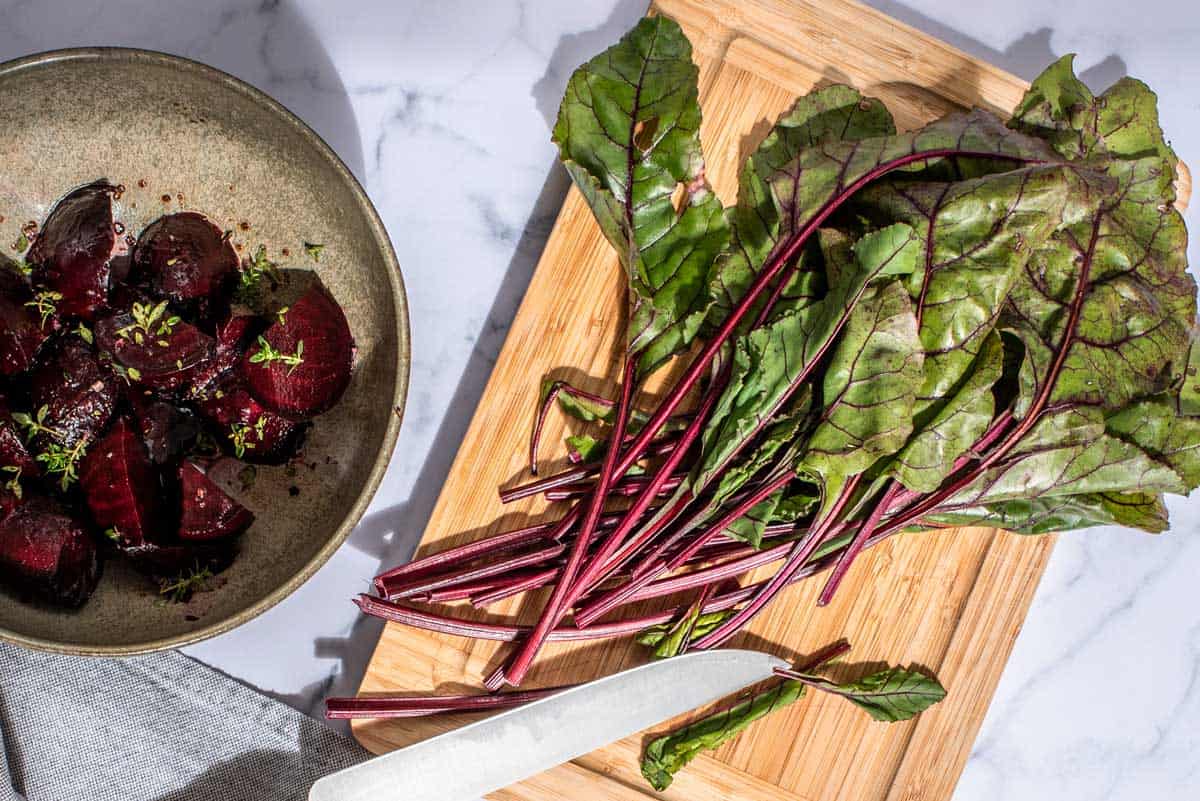
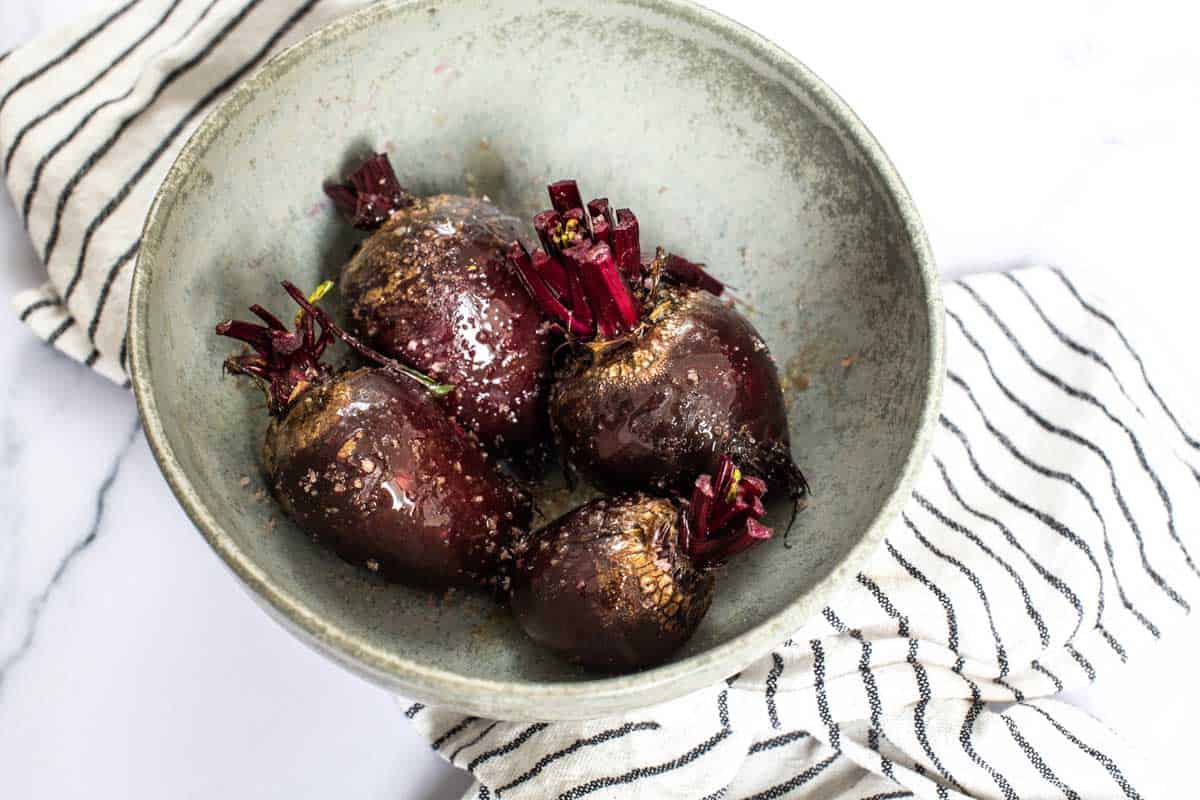
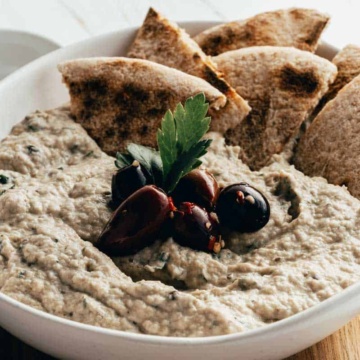

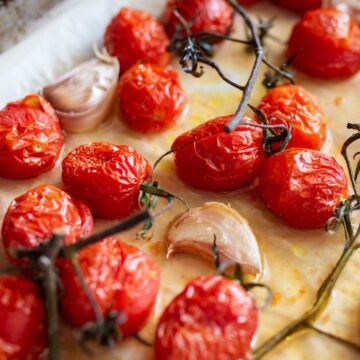
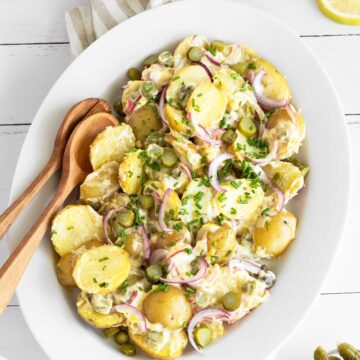
Leave a Reply